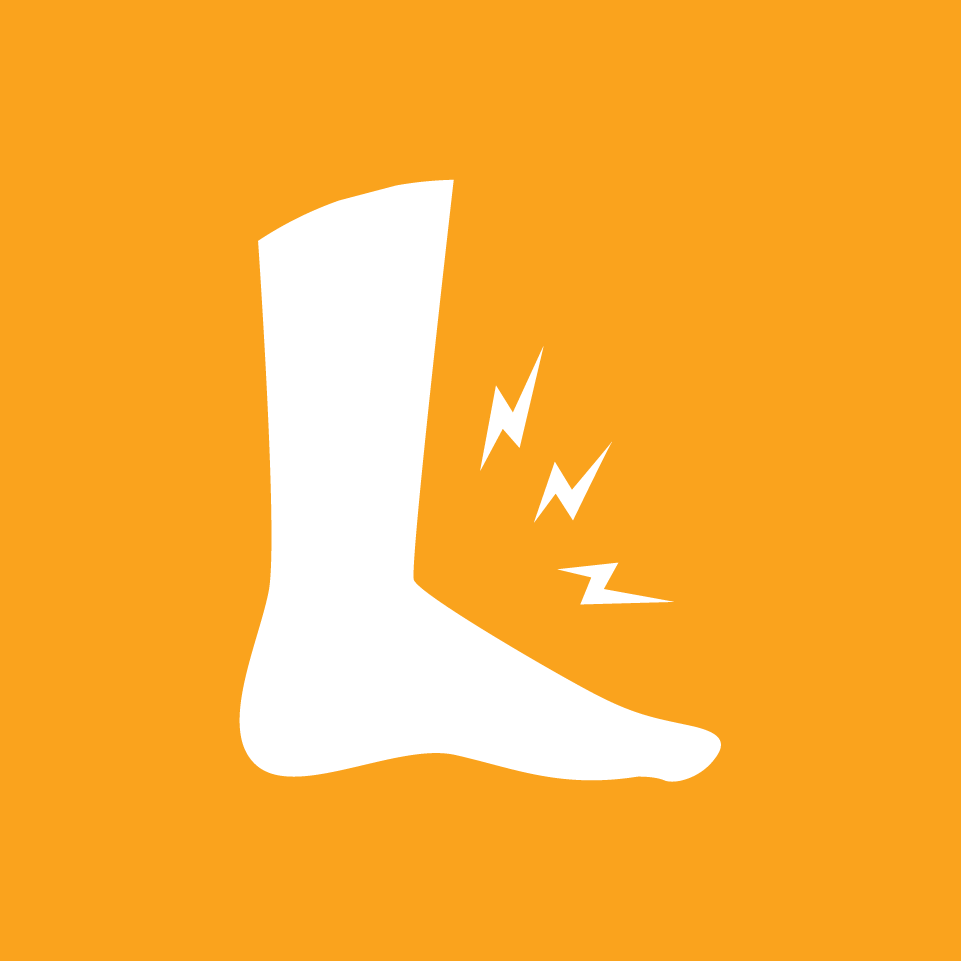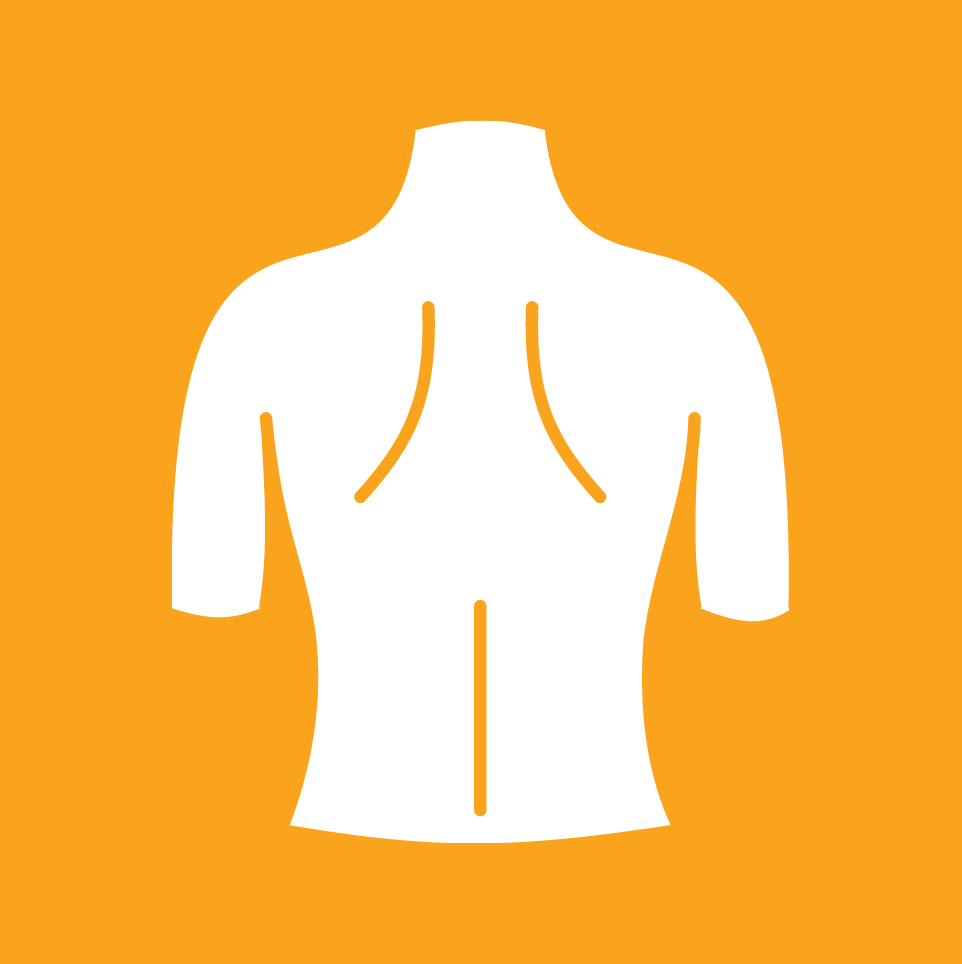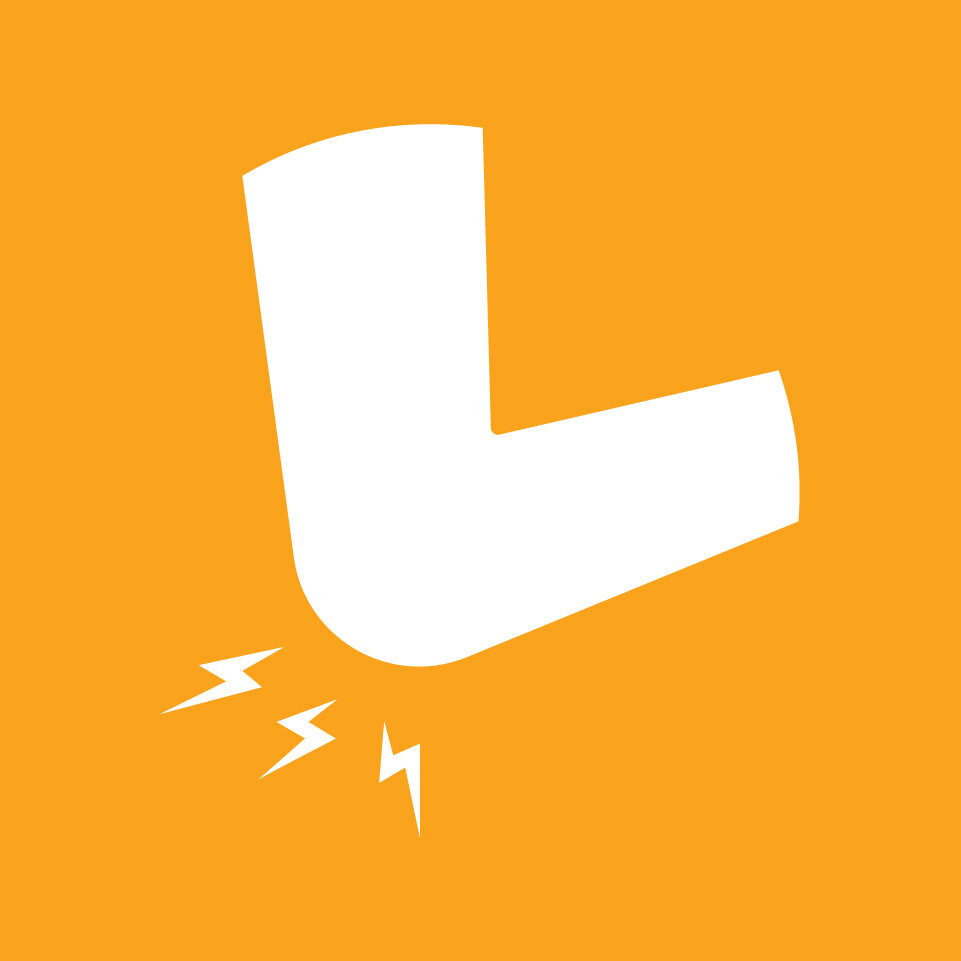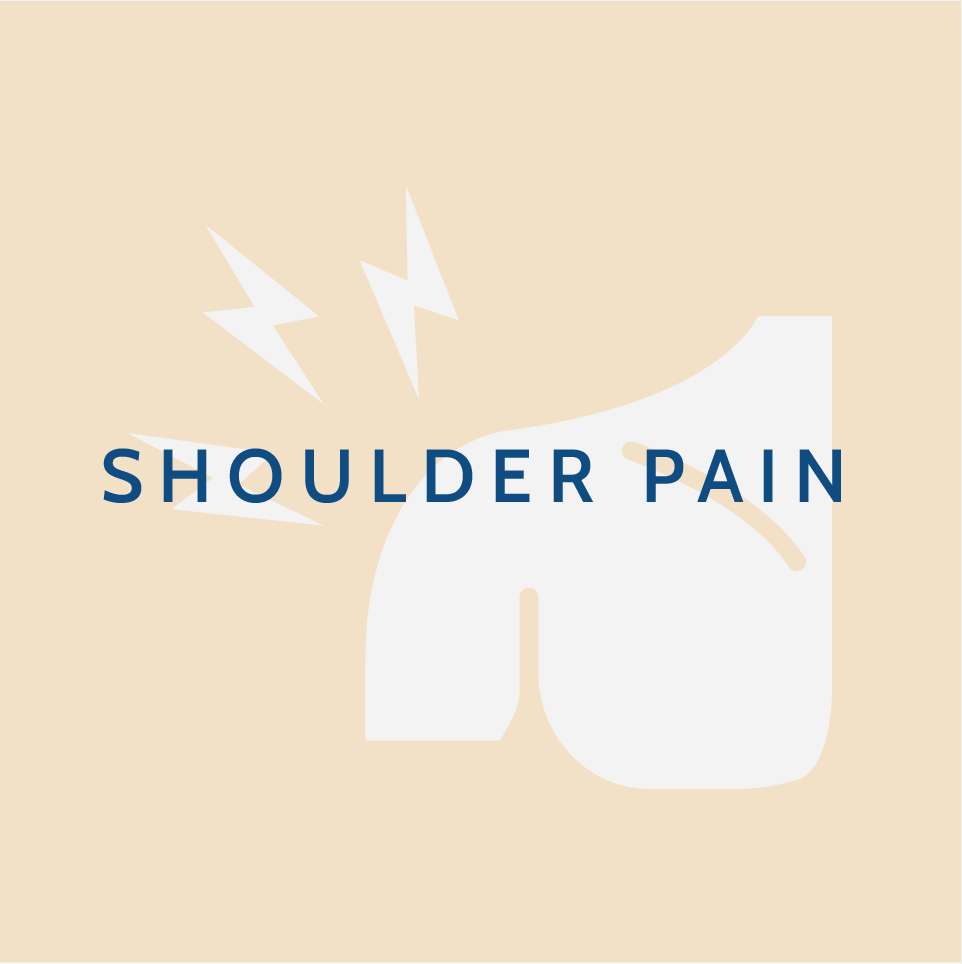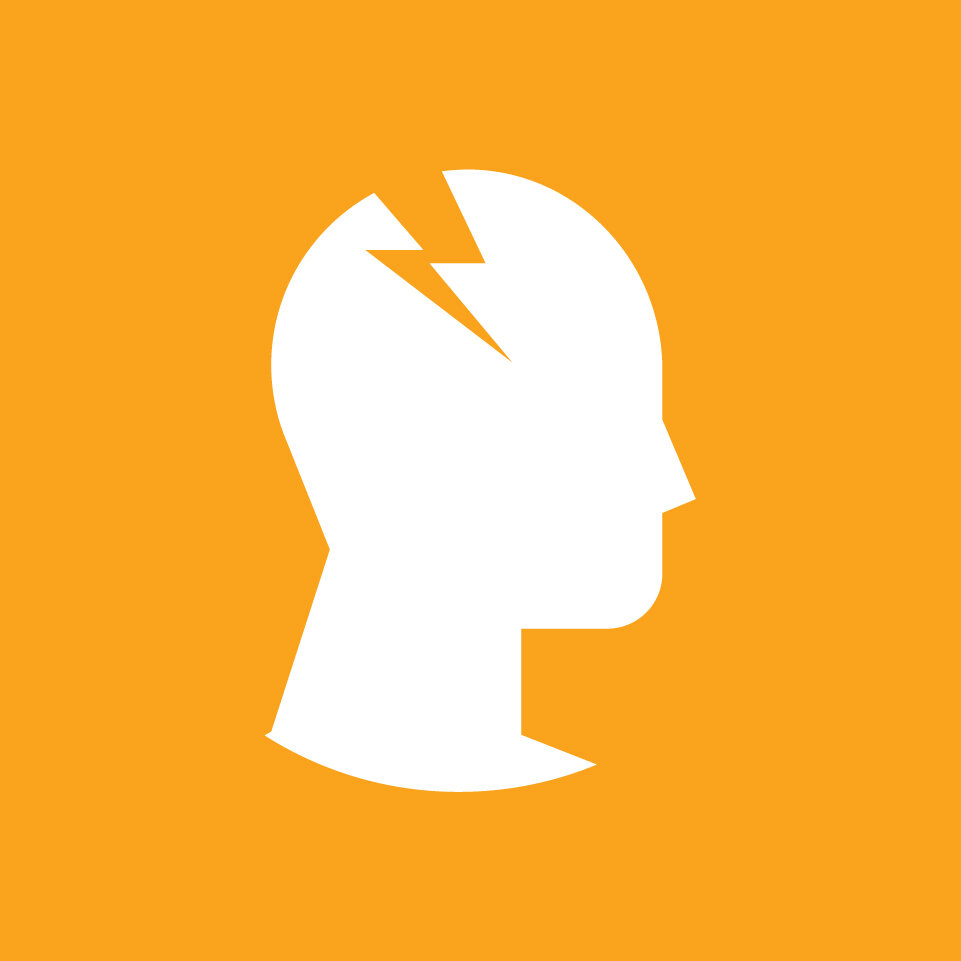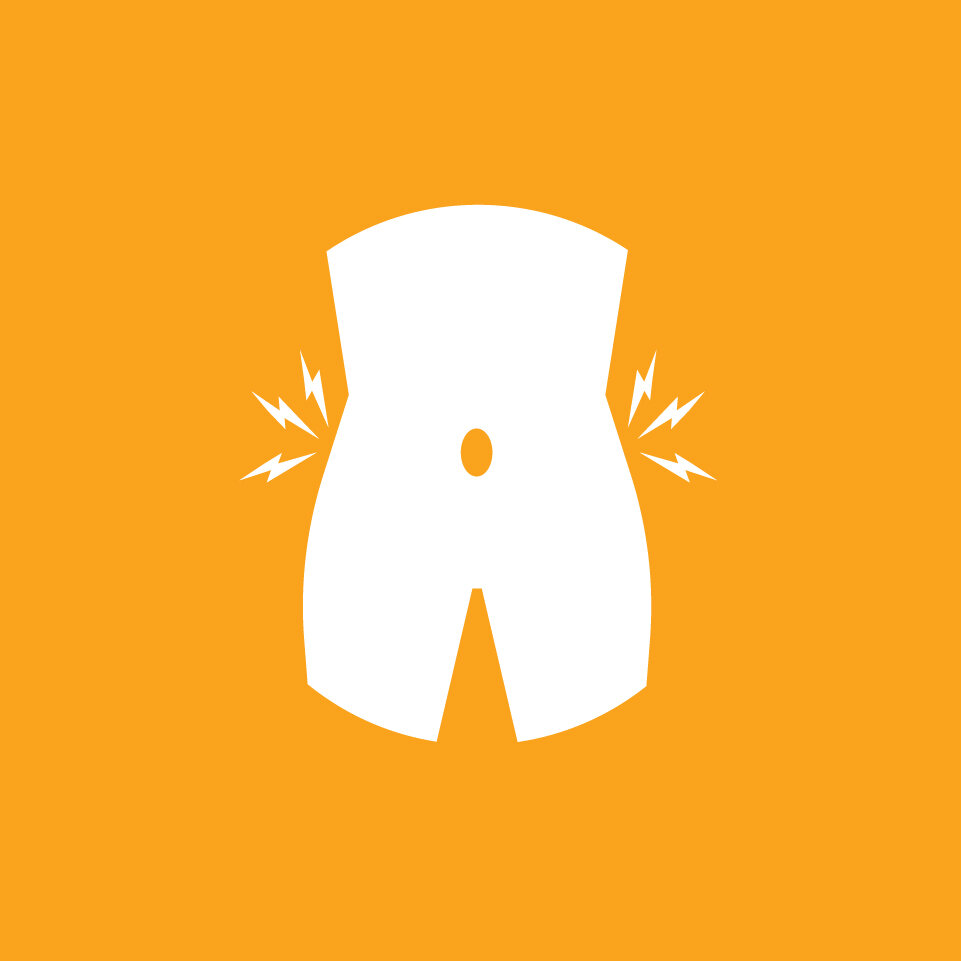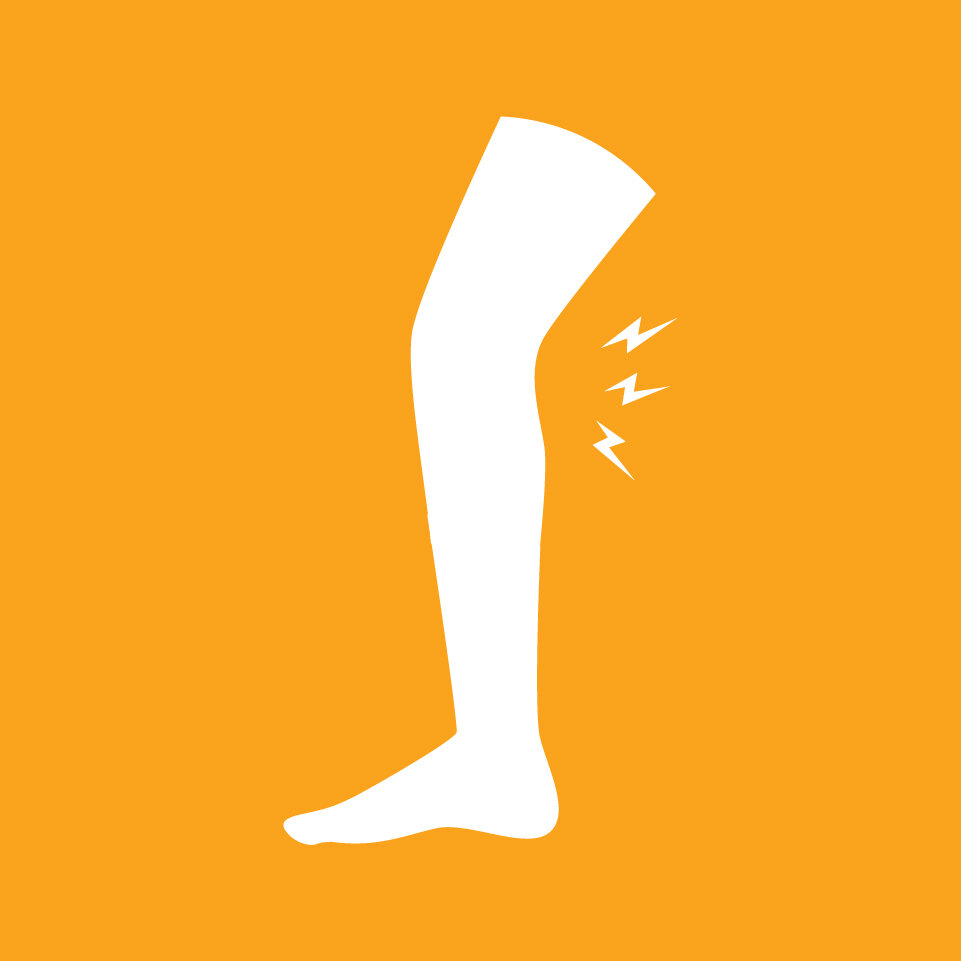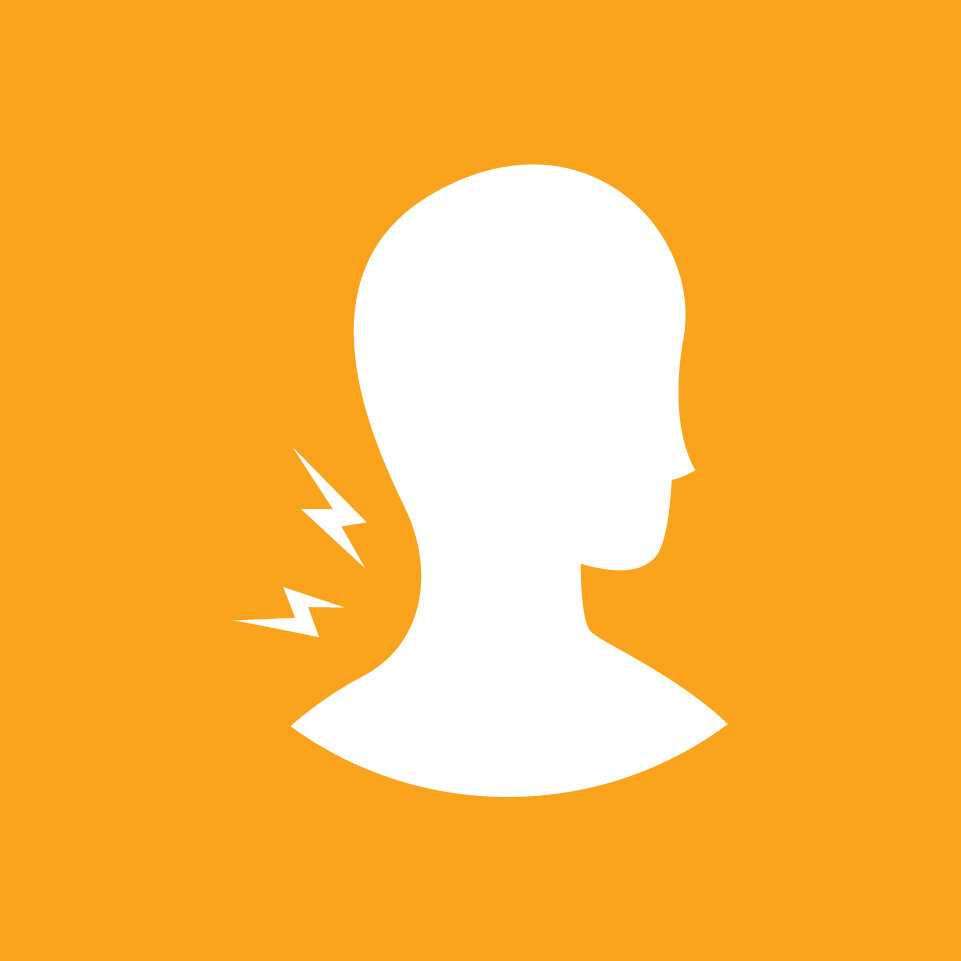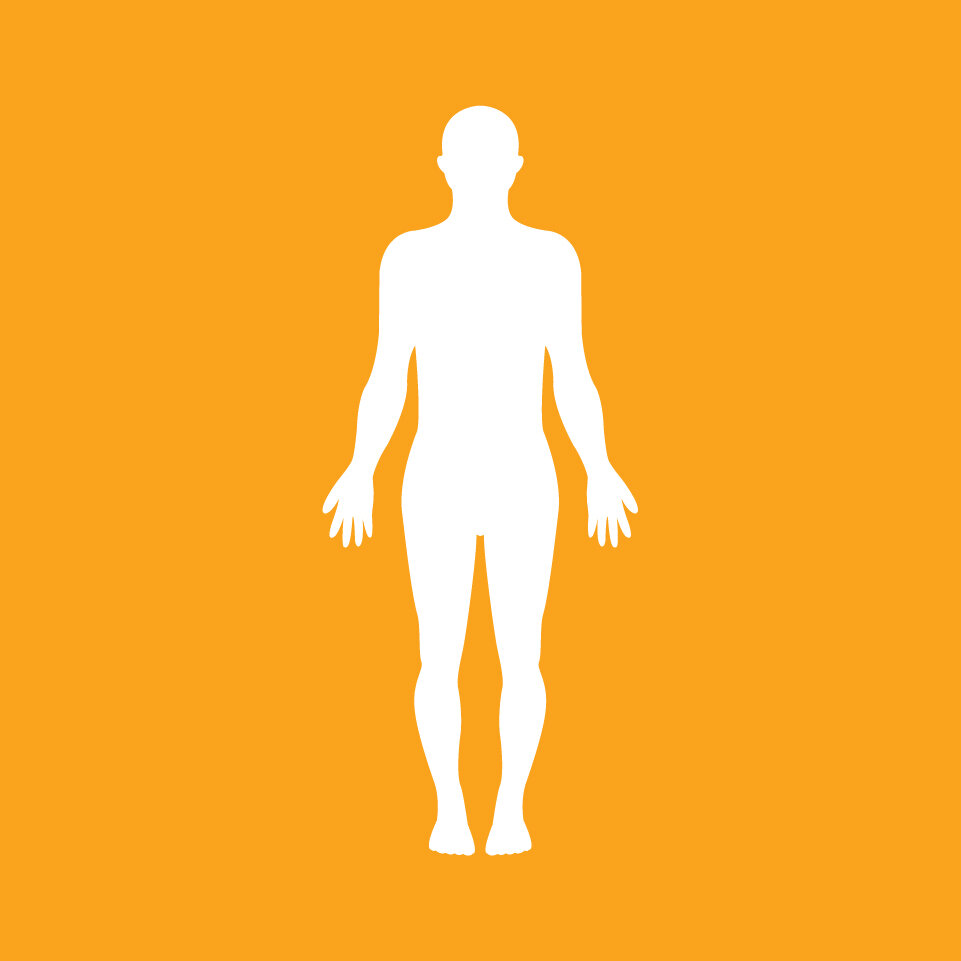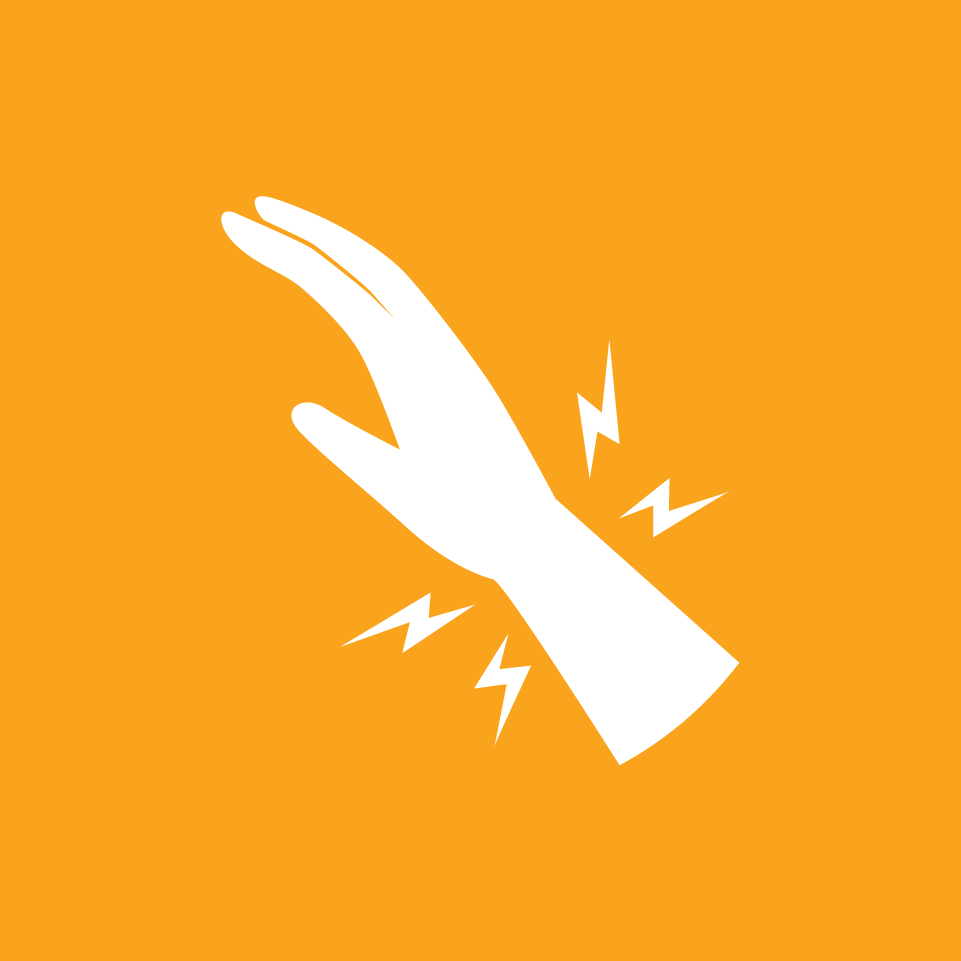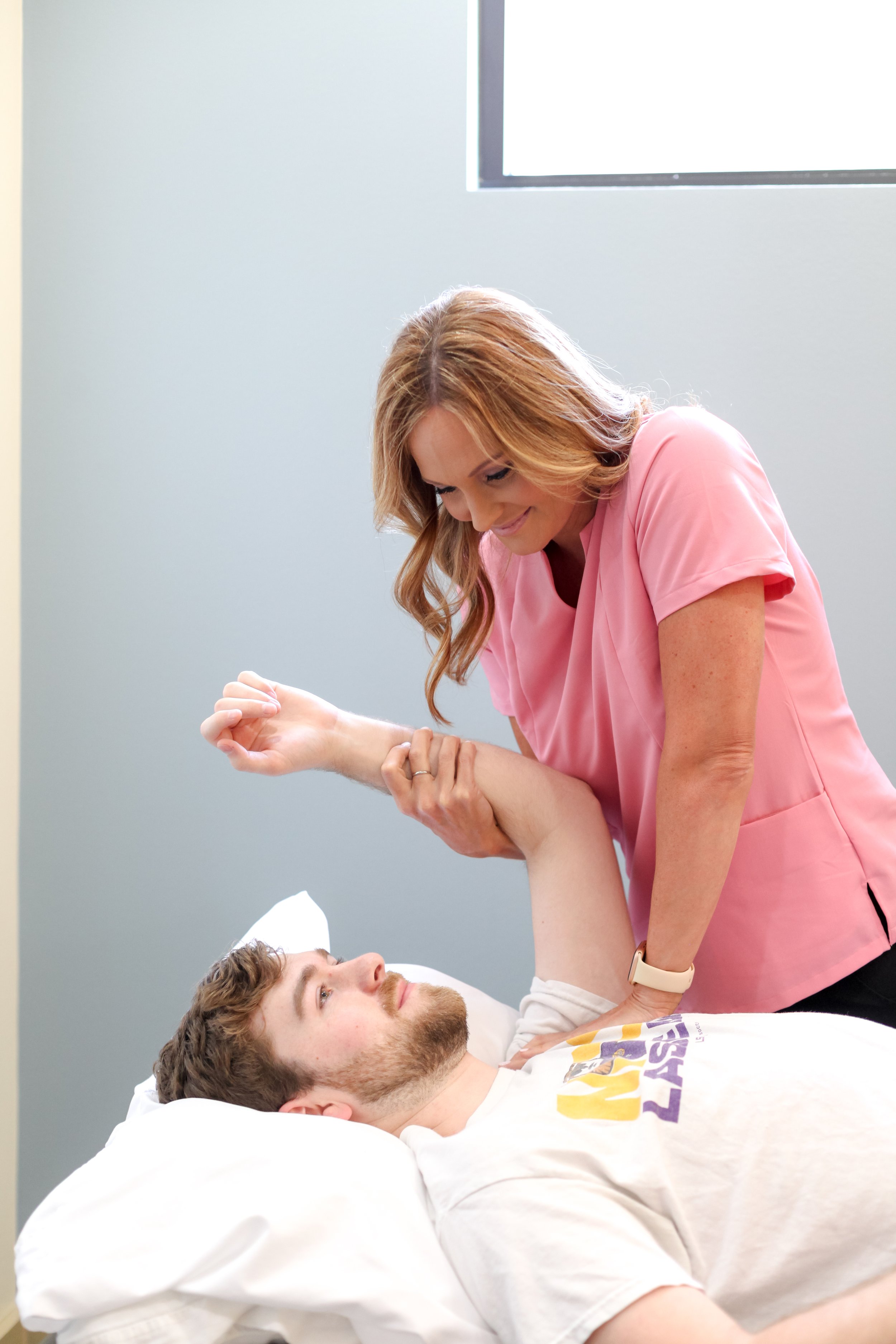Why does my shoulder hurt?
The shoulder consists of multiple joints along with muscles and tendons which allow your arm to move freely. Considered the most mobile joint in the body, the shoulder gets its large range of motion from its bony architecture. The rotator cuff is the most commonly injured structure in the shoulder because its function is to control and stabilize motion at the joint surfaces throughout the many different positions the shoulder can achieve. Any injury to the rotator cuff can cause pain when trying to move your arm around or lift your arm above your head. Pain at night, particularly when rolling onto the affected shoulder is a hallmark of rotator cuff pathology.
Shoulder injuries can occur from a large variety of activities such as manual labor, sports, and even simple repetitive movement. Diseases of the neck, liver, heart, lungs, or gallbladder can also be disguised as pain in the shoulder. While surgery is sometimes required to treat certain conditions of the shoulder, physical therapy can be a highly effective way to treat shoulder pain.
Possible reasons for shoulder pain:
Tendon tear in the shoulder
If you have a rotator cuff tear, you’re not alone. It happens to millions of people every year. It’s a common cause of shoulder pain. The right treatment can make you feel better, keep a small injury from getting worse, and help you heal. For many people, physical therapy (PT) is the answer. It may be all you need to treat an injured rotator cuff.
PT is a way to get back strength and movement after an injury. It includes things like exercise, ice, heat, massage, and equipment to help return your shoulder back to its normal range of motion.
Tendonitis/Tendinosis
Shoulder tendinopathy refers to any tendon injury in your shoulder, whether it is chronic or acute. This type of injury is usually caused by overuse. There are two types of tendon problems that can happen in your shoulder: Tendonitis and tendinosis.
Types of tendinopathy in the shoulder:
Tendonitis occurs when overuse causes tendon wear and inflammation. This is an acute injury, meaning the pain is immediate, but it’s easily treated and damage is not permanent.
Tendinosis happens when your tendon begins to degenerate and small tears appear in the tissue. This injury is more serious and brought on by chronic overuse or a sudden force that overloads the tendon. In most cases, the shoulder condition begins as tendonitis and turns into tendinosis when left untreated.
Symptoms of shoulder tendinopathy:
Pain in the front of your shoulder
Shoulder pain when reaching behind your back
Shoulder pain when lifting your arm
Shoulder pain at night when sleeping on your injured side
Shoulder pain that is worse with use
Shoulder weakness
Shoulder stiffness
Inflammation (tendonitis)
Loss of range of motion
“Clicking” sound when you raise your arm
Shoulder tendinopathy will not heal on its own if you continue the activity causing it. Treating tendinopathy will include resting the affected tendon until your pain subsides.
Rest: the first step toward recovery is to avoid activities that cause pain.
Ice: Apply cold packs for 20 minutes at a time, several times a day, to keep swelling down. Do not apply ice directly to the skin.
Heat: Use heat to decrease stiffness.
Physical therapy: Specific stretching and strengthening exercises can help restore range of motion and strengthen your shoulder.
Bursitis
Bursitis is an inflammation of the bursae. The bursae are small, fluid-filled sacs found near joints. They act as a cushion between moving parts in the joint to stop muscles, bones, and tendons from rubbing together.
When a shoulder bursa gets irritated, it becomes inflamed and grows in size. This means there is less space in the shoulder for muscles and tendons to move around, which can cause pain and a loss of movement in the shoulder.
Overuse of the shoulder joint, an injury, or chronic conditions, such as rheumatoid arthritis, can cause shoulder bursitis.
How Can a Physical Therapist Help?
Your physical therapist will work with you to design a specific treatment program that will speed your recovery, including exercises and treatments that you can do at home. Physical therapy will help you return to your normal lifestyle and activities. The time it takes to heal the condition varies, but results can often be achieved in 2 to 8 weeks, when a proper stretching and strengthening program is implemented.
During the first 24 to 48 hours following your diagnosis, your physical therapist may advise you to:
Rest the area by avoiding lifting or reaching overhead, or any activity that causes pain.
Apply ice packs to the area for 15 to 20 minutes every 2 hours.
Consult with a physician for further services, such as medication or diagnostic tests.
Your physical therapist will work with you to:
Reduce Pain and Swelling
Improve Motion
Improve Flexibility
Improve posture
Improve Strength
Improve Endurance
Learn a Home Program
Return to Activities
Speed Recovery Time
Arthritis
Unfortunately, there’s no cure for shoulder arthritis and the only way to treat this disease is by managing the associated symptoms. When used as part of a comprehensive treatment program prescribed by an orthopedic specialist, physical therapy can improve the painful symptoms of shoulder arthritis. Here’s everything you need to know:
How Arthritis Affects the Shoulder Joint
The shoulder is made up of the upper arm bone (humerus), scapula and clavicle. Arthritis can affect the shoulder at the acromioclavicular and glenohumeral joints. When left untreated, the severity of arthritis and related symptoms increase.
The Symptoms of Shoulder Arthritis
The most common symptom of shoulder arthritis is a deep, aching pain felt in the joint and/or on top of the shoulder. Other symptoms might include:
Decreased range of motion (ROM)
Weakness
Tenderness
Stiffness
Cracking, clicking, and/or popping sounds when moving the shoulder
Any or all of these symptoms can reach the point where they begin to limit your ability to perform daily activities. It is at this point where professional treatment, in the form of physical therapy, is needed for symptom relief.
How Physical Therapy Decreases the Symptoms of Shoulder Arthritis
Physical Therapists use the following treatments for effective symptom relief:
Strengthening exercises. Improving the strength of the rotator cuff and other shoulder muscles decrease weakness and stiffness and increase range of motion
Heat and ice. Applying heat relaxes the shoulder muscles to improve range of motion. Applying ice decreases inflammation and pain.
Ultrasound and electrical stimulation. Activating weak muscles using ultrasound and electrical stimulation improves atrophy and weakness.
Massaging shoulder and upper back muscles increases blow flow, which decreases inflammation and pain.
Stretching exercises. Stretching exercises improve range of motion.
A comprehensive treatment program uses these treatments in conjunction with others that can only be prescribed by an orthopedic specialist. The result of this type of holistic treatment approach to shoulder arthritis often is symptom relief or elimination. In many cases, results are long lasting. The key is diagnosing and treating the condition as soon as possible.
Shoulder Instability
Shoulder instability means that the shoulder joint is too loose and is able to slide around too much in the socket. In some cases, the unstable shoulder actually slips out of the socket. If the shoulder slips completely out of the socket, it has become dislocated. If not treated, instability can lead to arthritis of the shoulder joint.
Sometimes the shoulder does not come completely out of the socket. It slips only partially out and then returns to its normal position. This is called subluxation.
What makes a shoulder become unstable?
Shoulder instability often follows an injury that caused the shoulder to dislocate. This initial injury is usually fairly significant, and the shoulder must be reduced. To reduce a shoulder means it must be manually put back into the socket. The shoulder may seem to return to normal, but the joint often remains unstable. The ligaments that hold the shoulder in the socket, along with the labrum (the cartilage rim around the glenoid), may have become stretched or torn. This makes them too loose to keep the shoulder in the socket when it moves in certain positions. An unstable shoulder can result in repeated episodes of dislocation, even during normal activities. Instability can also follow less severe shoulder injuries.
In some cases, shoulder instability can happen without a previous dislocation. People who do repeated shoulder motions may gradually stretch out the joint capsule. This is especially common in athletes such as baseball pitchers, volleyball players, and swimmers. If the joint capsule gets stretched out and the shoulder muscles become weak, the ball of the humerus begins to slip around too much within the shoulder. Eventually this can cause irritation and pain in the shoulder.
A genetic problem with the connective tissues of the body can lead to ligaments that are too elastic. When ligaments stretch too easily, they may not be able to hold the joints in place. All the joints of the body may be too loose. Some joints, such as the shoulder, may be easily dislocated. People with this condition are sometimes referred to as double-jointed.
Non-surgical Rehabilitation
Even nonsurgical treatment for shoulder instability usually requires a rehabilitation program. The goal of Physical Therapy is to strengthen the rotator cuff and shoulder blade muscles to make the shoulder more stable.
When you begin your physical rehabilitation program, we will first help you control your pain and inflammation. The initial treatment that we recommend to control pain is usually rest and anti-inflammatory medication, such as aspirin or ibuprofen. Ensure that you consult with your doctor or pharmacist regarding the use of pain relief or anti-inflammatory medication.
Our Physical Therapist will show you ways to avoid positions and activities that put your shoulder at further risk of injury or dislocation. We may issue overhand athletes a special shoulder strap or sleeve to stop the shoulder from moving in ways that strain it.
Your Physical Therapist may employ heat or ice treatments to ease pain and inflammation. We use hands-on treatments and various types of exercises to improve the range of motion in your shoulder and nearby joints and muscles. Later, you will do strengthening exercises to improve the strength and control of the rotator cuff and shoulder blade muscles. Our Physical Therapist will help you retrain these muscles to keep the ball of the humerus in the socket. This will improve the stability of the shoulder and help your shoulder joint move smoothly.
Although the time required for recovery varies, as a guideline, you may need Physical Therapy treatments for six to eight weeks. Most patients are able to get back to their activities with full use of their arm within this amount of time.
Post-surgical Rehabilitation
Rehabilitation after surgery is more complex. You will likely wear a sling to support and protect the shoulder for one to four weeks. The Physical Therapists can design a personalized program for your recovery. Depending on the surgical procedure, you will probably need to attend therapy sessions for two to four months. You should expect full recovery to take up to six months.
Our first few Physical Therapy treatments will focus on controlling the pain and swelling from surgery. Ice and electrical stimulation treatments may help. Our Physical Therapist may also use massage and other types of hands-on treatments to ease muscle spasm and pain.
Therapy after Bankart surgery proceeds slowly. We will begin range-of-motion exercises soon after surgery, but are cautious about doing stretches on the front part of the capsule for the first six to eight weeks. Our program gradually works into active stretching and strengthening.
Physical Therapy goes even slower after surgeries where the front shoulder muscles have been cut. Exercises begin with passive movements. During passive exercises, our Physical Therapist will move your shoulder joint, but your muscles stay relaxed. We gently move your joint and gradually stretch your arm. Our Physical Therapist may teach you how to do these passive exercises at home.
Active therapy starts three to four weeks after surgery. We will teach you to you use your own muscle power in active range-of-motion exercises. Our Physical Therapist may begin with light isometric strengthening exercises. These exercises work the muscles without straining the healing tissues.
At about six weeks, we will have you start doing more active strengthening. These exercises focus on improving the strength and control of the rotator cuff muscles and the muscles around the shoulder blade. Our Physical Therapist will help you retrain these muscles to keep the ball of the humerus in the socket. This helps your shoulder move smoothly during all your activities.
By about the tenth week, we will start have you begin more active strengthening. These exercises focus on improving strength and control of the rotator cuff muscles. Strong rotator cuff muscles help hold the ball of the humerus tightly in the glenoid to improve shoulder stability.
Overhand athletes (such as those who throw baseballs or footballs, swim or play volleyball or racquet sports) start gradually in their sport activity about three months after surgery. Although the time required for recovery varies, overhand athletes can usually return to competition within four to six months.
Some of the exercises we’ll teach you are designed to get your shoulder working in ways that are similar to your work tasks and sport activities. Our Physical Therapist will help you find ways to do your tasks that don't put too much stress on your shoulder. Before your therapy sessions end, we will teach you a number of ways to avoid future problems.
Fracture or broken bone
A proximal humeral fracture is a broken bone that occurs near your shoulder joint. "Proximal" refers to being close to your body, and "humeral" refers to the arm bone known as the humerus.
A proximal humeral fracture can be a painful injury that limits your ability to move your arm and shoulder. This can have a significant impact on your ability to work, perform household duties, or enjoy recreational activities.
Proximal humeral fractures can be treated conservatively with an arm sling, pain management, and supportive care. While surgery is rarely necessary, some severe fractures, including badly displaced fractures or open fractures may require a surgical procedure. A physical therapy program after a proximal humeral fracture can help you return to normal activity quickly and safely.
Physical Therapy
Your first encounter with a physical therapist may take place immediately after injury in the hospital. The physical therapy may start with a lesson on how to properly wear your sling. You may also be taught gentle pendulum exercises to help keep your shoulder mobile as it heals. Your doctor will let you know if it is safe to perform these exercises.
In four to six weeks, you may be ready to partake in active physical therapy. After a thorough evaluation, your physical therapist will provide you an outline of exercises and treatments to aid in your recovery. This will typically focus on five things:
Range of motion
Strength
Pain Management
Function
Scar mobility
Eight to 12 weeks after the injury, your strength and mobility should have improved enough to return to full activity. Your pain level should be minimal as well.
Impingement
Shoulder impingement is a common cause of shoulder pain. It’s also known as impingement syndrome or swimmer’s shoulder, since it’s common in swimmers. It’s also common in other athletes who use their shoulders a lot, such as baseball or softball players.
Your rotator cuff is a group of muscles and tendons that attach your upper arm bone to your shoulder. They help you lift and rotate your arm. The rotator cuff sits under the top of the shoulder, which is called the acromion. If you have shoulder impingement, your rotator cuff catches or rubs against the acromion. When you lift your arm, the space (bursa) between the rotator cuff and acromion narrows, which increases pressure. The increased pressure irritates the rotator cuff, leading to impingement.
Physical therapy
Shoulder impingement usually responds well to physical therapy, which uses gentle exercises to rebuild strength and range of motion. Your doctor can refer you to a physical therapist who specializes in shoulder injuries.
Your physical therapy sessions will likely focus on the muscles in your shoulder, arm, and chest, which can help to improve the function of your rotator cuff. If you’re an athlete or work in a field that requires frequent use of your shoulder, your physical therapist can teach you proper techniques to reduce your chance of recurrence.
They may also give you some exercises that you can do at home, which may help you recover faster. Just make sure you don’t overdo it.
Frozen shoulder
What is Frozen Shoulder (Adhesive Capsulitis)?
Adhesive capsulitis is the stiffening of the shoulder due to scar tissue, which results in painful movement and loss of motion. The actual cause of adhesive capsulitis is a matter of debate. Some believe it is caused by inflammation, such as when the lining of a joint becomes inflamed (synovitis), or by autoimmune reactions, where the body launches an "attack" against its own substances and tissues. Other possible causes include:
Reactions after an injury or surgery
Pain from other conditions, such as arthritis, a rotator cuff tear, bursitis, or tendinitis, that has caused a person to stop moving the shoulder
Immobilization of the arm, such as in a sling, after surgery or fracture
Often, however, there is no clear reason why adhesive capsulitis develops.
Your physical therapist's overall goal is to restore your movement, so you can perform your daily activities. Once the evaluation process has identified the stage of your condition, your physical therapist will create an individualized exercise program tailored to your specific needs. Exercise has been found to be most effective for those who are in stage 2 or higher. Your treatment may include:
Stages 1 and 2 (Prefreezing & Freezing):
Exercises and manual therapy. Your physical therapist will help you maintain as much range of motion as possible and will help reduce your pain. Your therapist may use a combination of range-of-motion exercises and manual therapy (hands-on) techniques to maintain shoulder movement.
Modalities. Your physical therapist may use heat and ice treatments (modalities) to help relax the muscles prior to other forms of treatment.
Home-exercise program. Your physical therapist will give you a gentle home-exercise program designed to help reduce your loss of motion. Your therapist will warn you that being overly aggressive with stretching in this stage may make your shoulder pain worse.
Your physical therapist will match your treatment activities and intensity to your symptoms, and educate you on the appropriate use of the affected arm. Your therapist will carefully monitor your progress to ensure a safe healing procedure is followed.
Stage 3 (Frozen):
The focus of treatment during phase 3 is on the return of motion. Treatment may include:
Stretching techniques. Your physical therapist may introduce more intense stretching techniques to encourage greater movement and flexibility.
Manual therapy. Your physical therapist may take your manual therapy to a higher level, encouraging the muscles and tissues to loosen up.
Strengthening exercises. You may begin strengthening exercises targeting the shoulder area as well as your core muscles. Your home-exercise program will change to include these exercises.
Stage 4 (Thawing):
In the final stage, your physical therapist will focus on the return of "normal" shoulder body mechanics and your return to normal, everyday, pain-free activities. Your treatment may include:
Stretching techniques. The stretching techniques in this stage will be similar to previous ones you’ve learned, but will focus on the specific directions and positions that are limited for you.
Manual therapy. Your physical therapist may perform manual therapy techniques in very specific positions and ranges that are problematic for you. They will focus on eliminating the last of your limitations.
Strength training. Your physical therapist will prescribe specific strengthening exercises related to any weakness that you may have to help you perform your work or recreational tasks.
Return to work or sport. Your physical therapist will address movements and tasks that are required in your daily and recreational life.
Labral tear
A torn labrum is a problem in the shoulder that may cause shoulder pain, frequent dislocations of your shoulder, or problems with properly using your arm. Physical therapy may be necessary to help you decrease pain, improve mobility, and regain normal use of your arm after a labrum tear.
Your shoulder is a ball-and-socket joint. The ball is at the end of your humerus, the arm bone, and it sits in the socket located at the end of your scapula, or shoulder blade. The ball is much bigger than the socket, which allows a lot of mobility to occur at your shoulder joint. This allows you to move your arms in many directions.
Since the ball is so much bigger than the socket, the shoulder is considered a very unstable joint. The ball can easily slip out of the socket, causing shoulder pain and dysfunction.
The labrum is a band of cartilage that courses around the edge of the socket in your shoulder. It serves to add depth to the socket of your shoulder joint.
The labrum also serves as an attachment point for other structures in your shoulder. Some of the ligaments that support your shoulder attach to the labrum. One of the two biceps tendons attaches to the top portion of the labrum in your shoulder.
Physical Therapy
If you have suffered a labrum tear, your doctor may refer you to physical therapy. There, your physical therapist will evaluate and assess your condition to help formulate a plan of care to treat your labrum.
Acute labrum tears may be quite painful, and your physical therapist may provide you with treatments to control your pain. Heat, ice, or electrical stimulation like TENS may be used to help decrease your pain. Caution should be used with these passive modalities; many studies indicate that active involvement in your care is the best form of treatment.
Sometimes your shoulder becomes tight after an acute labrum tear. Your physical therapist may help you work on restoring normal range of motion (ROM) on your shoulder.1 Care should be taken not to be too aggressive here. A torn labrum usually causes your shoulder joint to be unstable, and aggressive ROM therapy may cause your shoulder to come out of joint.
Since a torn labrum may cause your shoulder to be unstable, exercises to improve strength and stability around your shoulder are an essential part of your rehabilitation.
Exercise after a labrum tear may be required. Exercises to increase shoulder strength should focus on the muscles collectively called the rotator cuff.2 These four muscles surround your shoulder and help to keep your shoulder in place when you move your arm. Strengthening the muscles around your shoulder blade and in your arm may also help to provide stability to your shoulder after a labrum tear.
Proprioception is your body's ability to recognize where it is in space. Exercises to improve the proprioception around your shoulder may be included in your treatment.3 Plyometric exercises may also be included in your rehabilitation program, especially if you are planning on returning to high-level sports and recreation.
After a labrum tear in your shoulder, you should expect to return to normal activity in about six to eight weeks.
Shoulder dislocation
The shoulder includes the clavicle (collar bone), scapula (shoulder blade), and humerus (upper-arm bone). The rounded top of the humerus and the cup-like end of the scapula fit together like a ball and socket. A shoulder dislocation can occur with an injury, such as when you "fall the wrong way" on your shoulder or outstretched arm, forcing the shoulder beyond its normal range of movement and causing the humerus to come out of the socket. Dislocation can result in damage to many parts of the shoulder, including the bones, the ligaments, the labrum (the ring of cartilage that surrounds the socket), and the muscles and tendons around the shoulder joint. Joints may dislocate when a sudden impact causes the bones in the joint to shift out of place. Dislocations are among the most common traumatic injuries affecting the shoulder.
Physical Therapy
After the dislocated humerus has been moved back into position, your arm will be placed in a sling to protect you from reinjury and to make your shoulder more comfortable. Your physical therapist can review your health and injury history and conduct a physical examination to determine your rehabilitation needs. Based on the results of the examination and your goals, your physical therapist will guide you through a rehabilitation program to restore your mobility, strength, joint awareness, and sport-specific skills. Your therapist also will show you how to control your pain and relieve any inflammation.
Your treatment program may include:
Range-of-motion exercises
Strengthening exercises
Joint awareness and muscle retraining
Activity- or sport-specific training

